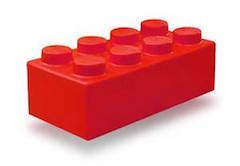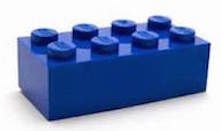Red and blue LEGO blocks
A box is filled with red and blue lego blocks. Initially, 6 1 of the blocks are blue. After one of the blocks is removed from the box, 7 1 of the blocks are blue. How many red blocks are in the box?


The answer is 30.
This section requires Javascript.
You are seeing this because something didn't load right. We suggest you, (a) try
refreshing the page, (b) enabling javascript if it is disabled on your browser and,
finally, (c)
loading the
non-javascript version of this page
. We're sorry about the hassle.
10 solutions
Initially, for every blue block in the box there are 5 red blocks. So if we start out with n blue blocks we also have 5 n red blocks, resulting in a probability of n + 5 n n = 6 1 of drawing a blue block.
Now since after drawing one block the probability of drawing another blue block decreases, we can assume that a blue block was drawn. We thus have n − 1 blue blocks and 5 n red blocks remaining, and so the given information implies that
( n − 1 ) + 5 n n − 1 = 7 1 ⟹ 7 ( n − 1 ) = 6 n − 1 ⟹ n = 6 .
Thus there are 5 n = 3 0 red blocks in the box.
I used a simple logic. Since initially the blue blocks are 1/6 of total blocks, the no of total blocks has to be in multiple of 6. The number on removing one block;has to be in multiple of 7. So I checked table of 6 and found that 6*6 = 36 and 36-1= 35 is multiple of 7. Therefore the initial no of blocks has to be 36.and Red blocks are 5/6 of that i.e. 30
let x = red + blue, then x/6 = blue and 5x/6 = red, because the propotion of blue decreases, so the block removed is blue. We have, (x-1)/7 = blue, 6(x-1)/7 = red. In this step, we have 2 ways to solve: [1]. (x-1)/7 = (x/6) -1 or [2]. 6(x-1)/7=5x/6 => x = 36 => red = 30.
Since initially the blue blocks are 1/6 of total blocks, the number of total blocks has to be in multiple of 6. The number on removing one block has to be a multiple of 7. So I found that 6*6 = 36 and 36-1= 35 is multiple of 7. Therefore the initial number of blocks has to be 36, and red blocks are 5/6 of that, i.e. = 30.
the blue blocks are 1/6 of total blocks, the number of total blocks has to be in multiple of 6. The number on removing one block has to be a multiple of 7. So I found that 6*6 = 36 and 36-1= 35 is multiple of 7. Therefore the initial number of blocks has to be 36, and red blocks are 5/6 of that, i.e. = 30.
If only 1 block gets removed, then we need to look for 2 numbers that satisfy the following: one of ´them is a multiple of 6, the other one is a multiple of 7, and the difference between the two numbers is 1. 35 and 36 are the first pair that satisfy these 3 criteria. Starting with 36: if 1/6 of blocks, are blue (ie. 6) then 30 are red. One gets removed, ie total of 35. 1./7 of blocks are blue, ie 5, leaving 30 red ones. Hence, 30 must be red. (What I haven't figured out or in is the following: How do we know which color the 1 block is that gets removed? Does this influence the result at all?)
let x be total number of blocks. So in the beginning there are x/6 blue blocks and 5x/6 red blocks. After picking one block the fraction of blue blocks reduce to 1/7. So the picked block must be blue. Now, the total number of blue blocks is (x-1)/7. the change in number of blue blocks occurred because of picking 1 blue block out. So, x/6 - (x-1)/7 =1 solving this we get x=36. 5/6 * 36=30
how.......1/6 x 36 = 30? It would be 6.
Let initially red lego is x, total will be 6x and blue will be 5x. First let's assume we remove blue lego, according to the question x-1=(6x-1)/7. Solve for x. x=6. Total red lego are 6*5=30
If you think about it, the total blocks will be 6x7-6 and 6x7-7 so it's pretty easy to know that there are 6 blue and 30 red to start Like 1/9 to 1/10 would be 90-9 and 90-10
Let x be the number of blue blocks and let y be the number of red blocks.
We are told that 6 1 of the blocks are blue. This gives rise to the equation x + y x = 6 1 . Cross-multiplying and rearranging terms gives y = 5 x .
It must be that a blue block was drawn, because the proportion of blue blocks has decreased from 6 1 to 7 1 . This allows us to write the equation x + y − 1 x − 1 = 7 1 . Again, cross-multiplying and rearranging terms yields y = 6 x − 6 . We can substitute the y = 5 x we obtained before into y = 6 x − 6 to obtain 5 x = 6 x − 6 ⟶ x = 6 .
We have 6 blue blocks, meaning we have y = 5 ( 6 ) = 3 0 red blocks.